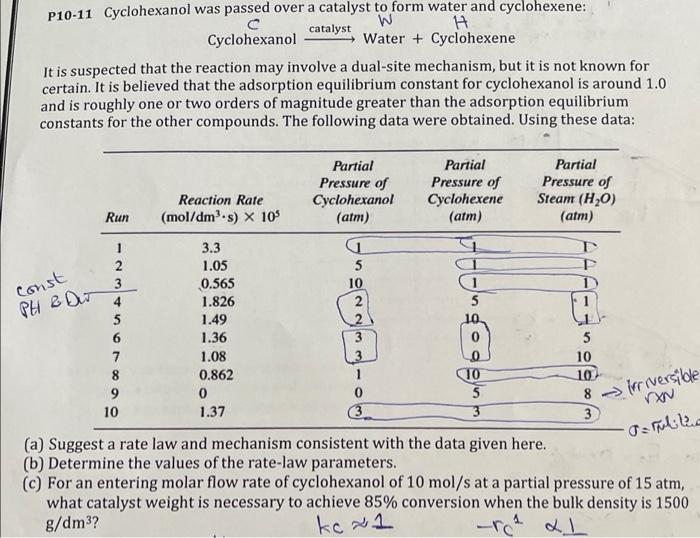Answered step by step
Verified Expert Solution
Question
1 Approved Answer
solve this question using polymath dont give me old solved answers they are not correct , plz resolve using polymath and show clear solution steps
solve this question using polymath dont give me old solved answers they are not correct , plz resolve using polymath and show clear solution steps 
P10-11 Cyclohexanol was passed over a catalyst to form water and cyclohexene: W catalyst H Cyclohexanol Water + Cyclohexene It is suspected that the reaction may involve a dual-site mechanism, but it is not known for certain. It is believed that the adsorption equilibrium constant for cyclohexanol is around 1.0 and is roughly one or two orders of magnitude greater than the adsorption equilibrium constants for the other compounds. The following data were obtained. Using these data: const AAFES PH & Du Partial Partial Partial Pressure of Pressure of Pressure of Reaction Rate Cyclohexanol Cyclohexene Steam (H2O) Run (mol/dms) X 10% (atm) (atm) (atm) 1 3.3 2 1.05 5 3 0.565 1 4 1.826 5 1.49 6 1.36 5 7 1.08 10 8 0.862 10 10 9 0 0 5 10 1.37 (3 3 3 (a) Suggest a rate law and mechanism consistent with the data given here. (b) Determine the values of the rate-law parameters. C) For an entering molar flow rate of cyclohexanol of 10 mol/s at a partial pressure of 15 atm, what catalyst weight is necessary to achieve 85% conversion when the bulk density is 1500 g/dm3? kc x1 - 8 irriversible Ostallic 
Step by Step Solution
There are 3 Steps involved in it
Step: 1

Get Instant Access to Expert-Tailored Solutions
See step-by-step solutions with expert insights and AI powered tools for academic success
Step: 2

Step: 3

Ace Your Homework with AI
Get the answers you need in no time with our AI-driven, step-by-step assistance
Get Started


